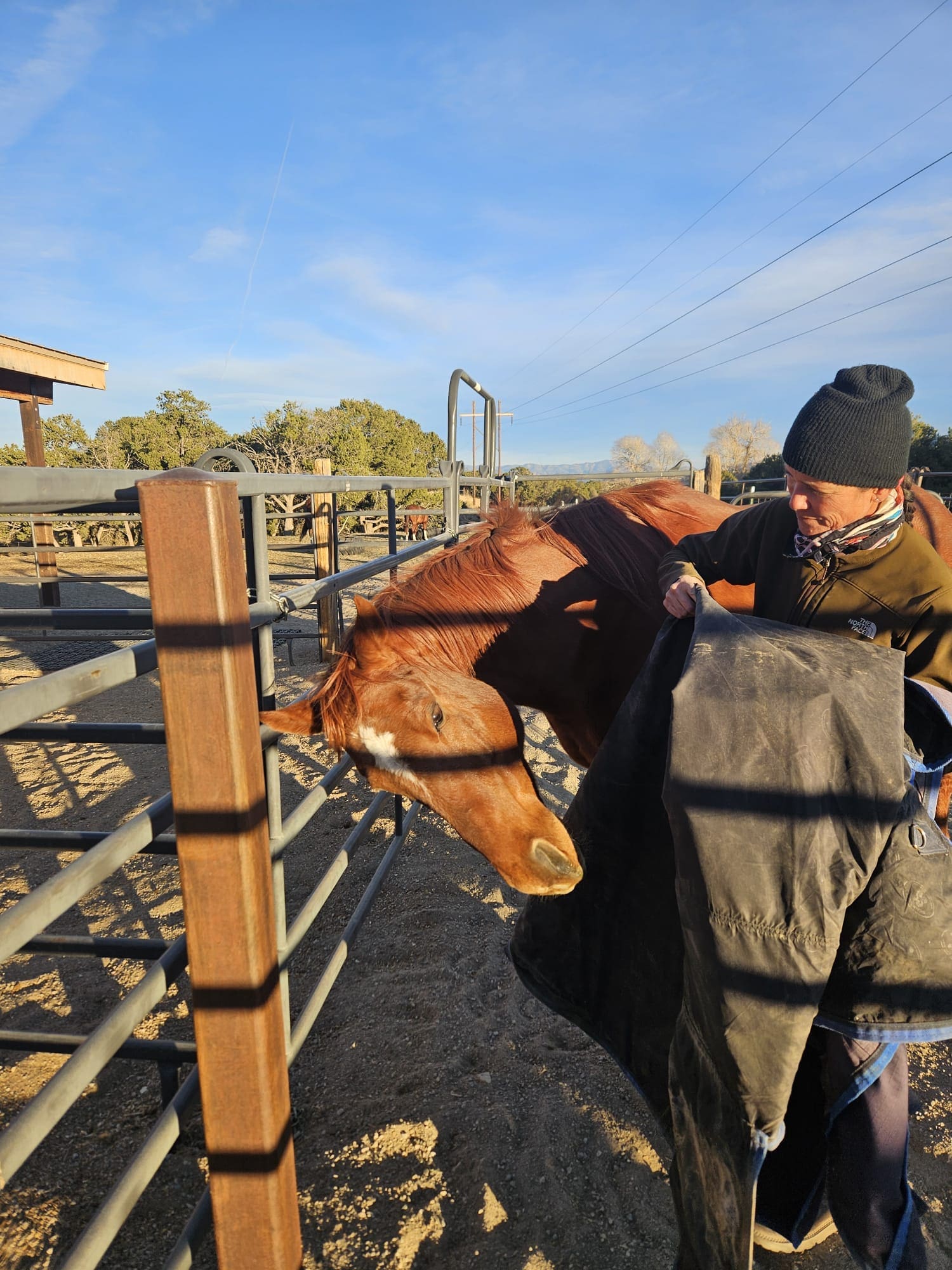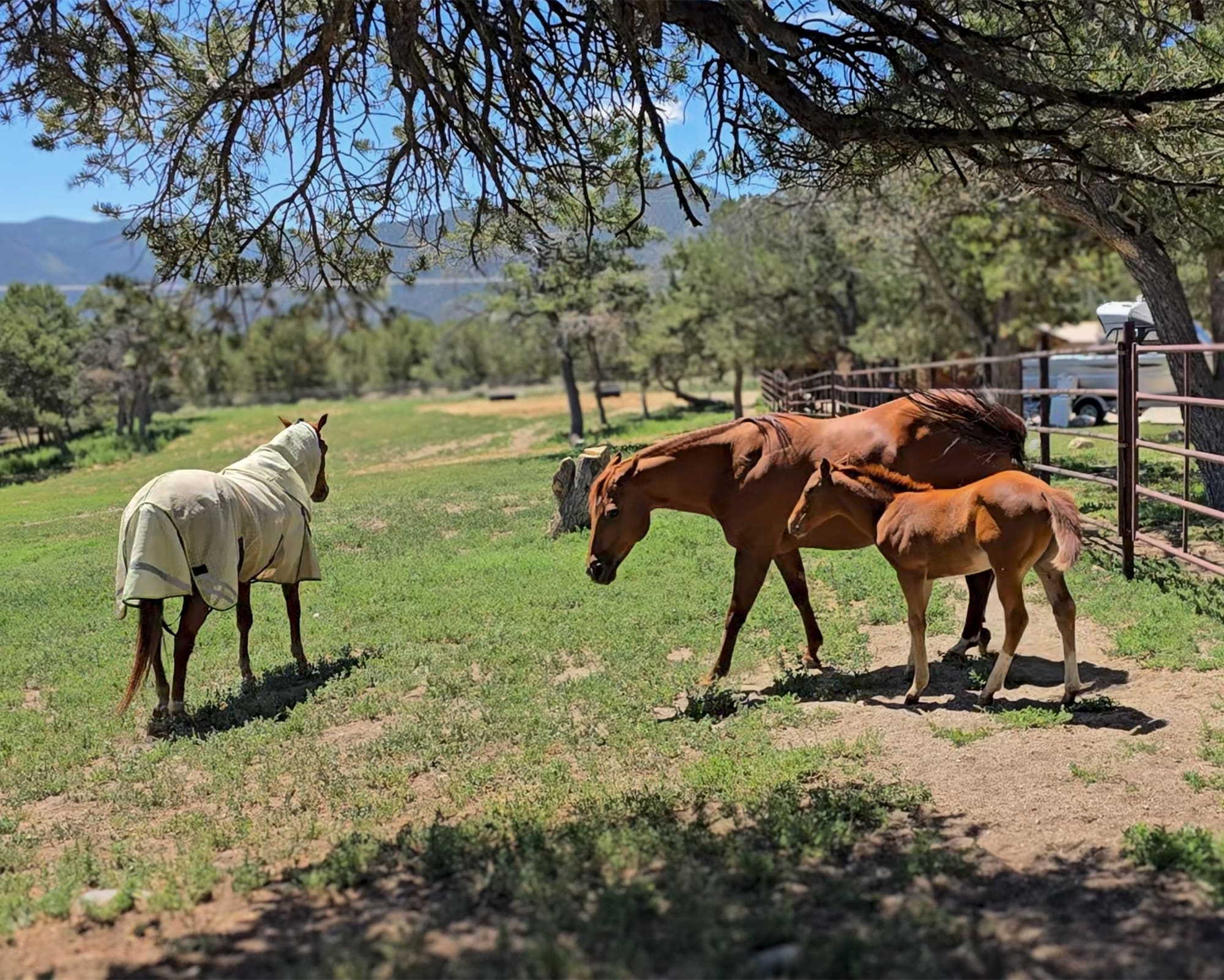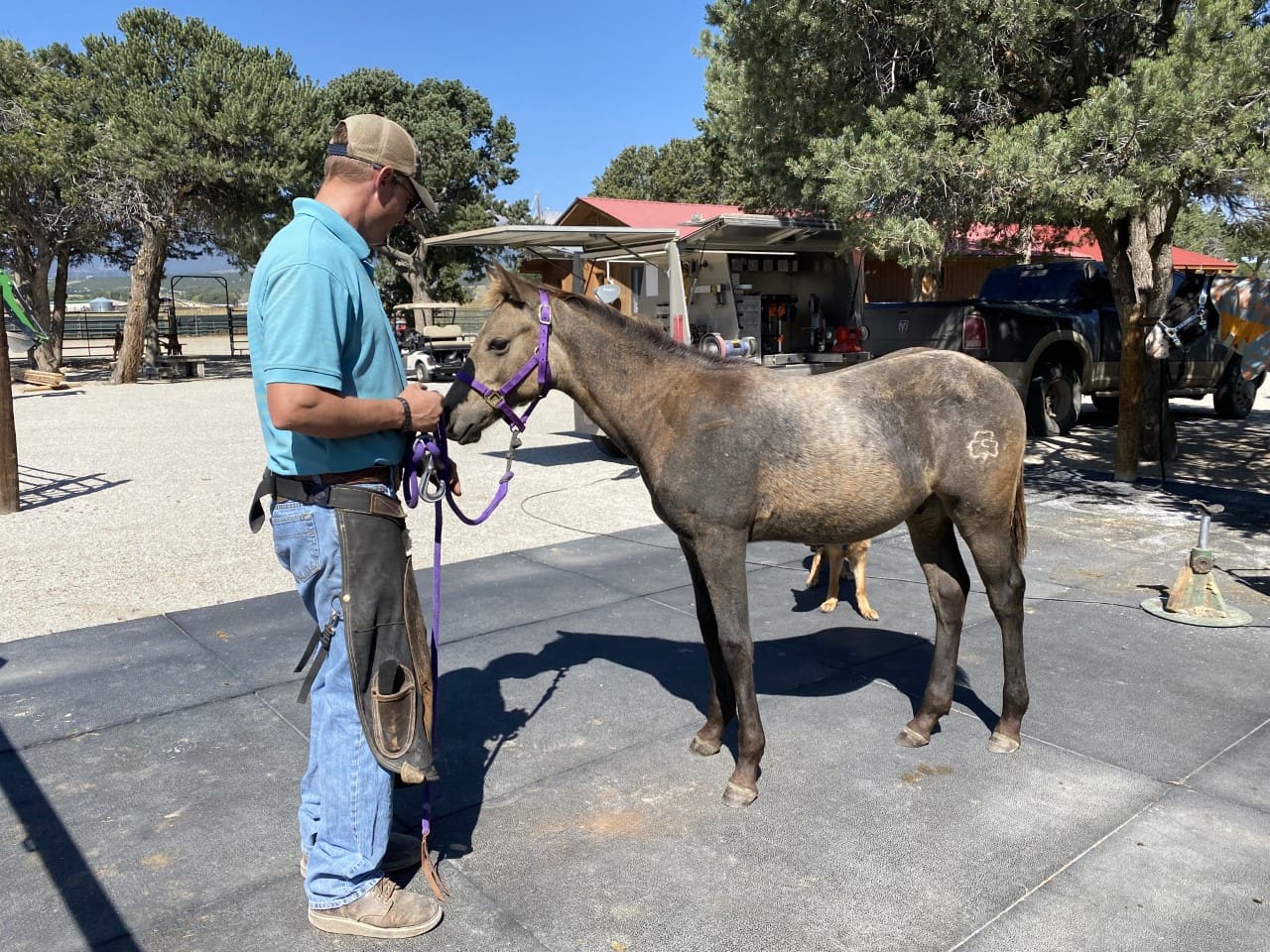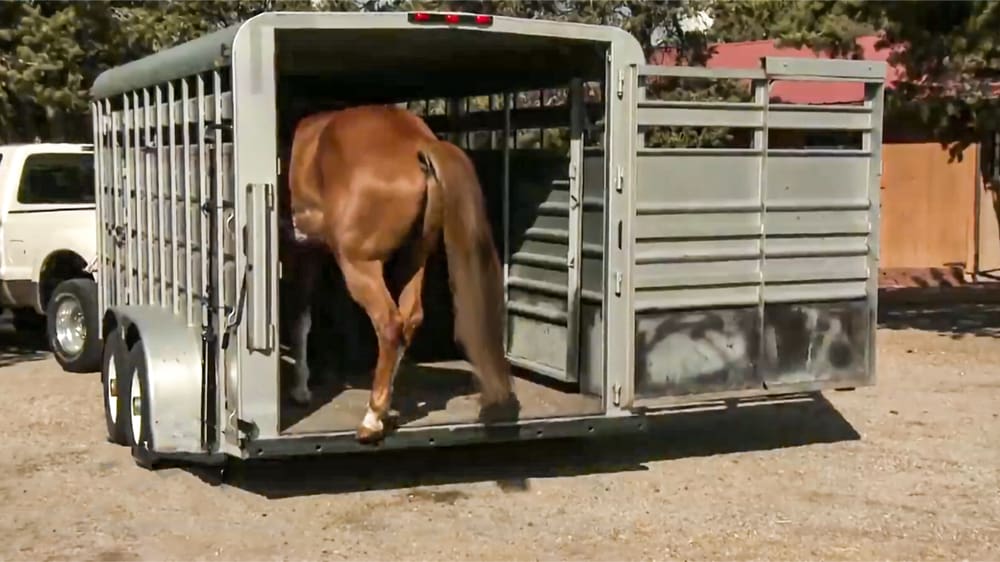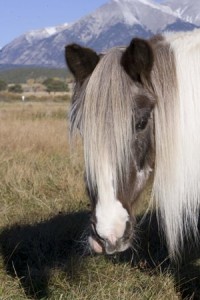 This morning we said good-bye to an old friend. It was an absolutely beautiful morning and my friend and neighbor Cheryl got up early in anticipation of the vet’s arrival at 7:00 am. When I arrived at her place 6:30, Cheryl had Patches nicely groomed and was walking her out in the field to let Patches nibble on her favorite morsels.
This morning we said good-bye to an old friend. It was an absolutely beautiful morning and my friend and neighbor Cheryl got up early in anticipation of the vet’s arrival at 7:00 am. When I arrived at her place 6:30, Cheryl had Patches nicely groomed and was walking her out in the field to let Patches nibble on her favorite morsels.
As we wandered through the field, going wherever Patches led us, we chatted about the hundreds of kids Patches had taught to ride when Cheryl had her riding lesson business. We watched as Patches bit off, chewed up and spit out the grass as she nibbled while we walked. We listened and remarked at the squeaking sound of her gums rubbing together, hopelessly trying to masticate the forage.
At nearly 40 years old, Patches’ grinding teeth were long gone and Cheryl was past the point of keeping her going on Senior feed and bran mashes, which she had recently been turning up her nose at. Cheryl tried any and all foods and strategies she could think of to keep the pony eating and healthy for as long as possible. The little pony would like some for a bit, then go on a hunger strike, then like something for a while again, then stop eating again. It was getting difficult to see the pony slowly starving to death though she thought she was eating with the rest of the herd. Patches had such a precious place at Cheryl’s farm–she was allowed to roam most anywhere on the property and was often the first greeter when you pulled down the driveway. The pony was the topic of discussion many times–was it time? Was she healthy? Cheryl worried and wanted to make sure she was doing the right thing–whether that was making a choice to let go or trying some new feeding ritual and recipe.
Patches was a lucky pony. Even though she worked for a living over several decades as a lesson pony, she was loved by many children and most certainly her photo adorns many refrigerators and scrap books. She was also fortunate to have an owner that gave her a comfortable retirement and one who could afford the expensive feed required to keep an old horse going.
An issue that I’ve seen coming for some time revolves around the incredible strides we humans have made to keep old horses alive long past the time they lose their teeth and would naturally die. Is this all the extra treatment for the horses or the humans? Sometimes I drive past pastures and see an old horse, nothing but a bag of bones, and wonder when and if someone will turn the owner into the animal control for neglect, even though his herd mates are fat, happy and healthy and chances are good the horse is just old, not neglected. Just because we have the ability to keep old horses alive longer, does that mean we have to? And what if the owner cannot afford the $100+ a month it would cost to sustain an aging horse, what then? Is that considered neglect to let nature take its course? Just questions to throw at the moon….
When I was a kid, the life span of a horse was considered to be 25 years and many didn’t make it that far. But now it is common to see horses in their 30s and even 40s. Don’t get me wrong, I think the advancement in health care and nutrition that has led to this longer life span is a wonderful thing and many of these horses remain useful for many more years than they would’ve back then. But I also think it is okay to let horses go when they get too old to chew grass or hay.
We have the option of humanely ending a horse’s life when it is time, but sometimes that decision is a tough one to make–whether it is age, sickness or lameness that prompts the question. Have you struggled with this decision before? When do you know it’s time?
Cheryl made the right decision to let Patches go before she got so weak she couldn’t stand or before some crises forced an emergency call to the vet in the middle of the night and a stressful euthanization. Cheryl wanted a calm and dignified death for Patches and that she got.
Cheryl said her good-byes at the barn and as the vet and I walked Patches toward her final resting place, she picked up her head and actually started trotting. Maybe she was ready to go or perhaps she was just excited to be headed toward a new place on the farm.
Patches went quickly and quietly with hardly a twitch. She was ready to go and did not fight it a bit. We laid her to rest wrapped in a warm blanket and laying in a deep bed of shavings, with a bag of carrots sprinkled on top to keep her busy on her way to horse heaven.
We’ll miss you Patches, but we know that you are in a better place.
Julie
For training tips from Julie, visit the Training Library at Membership and check out her online store–full of training tools and DVDs– at Julie’s Shopping Cart
